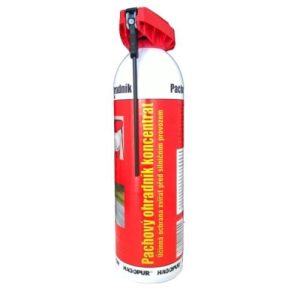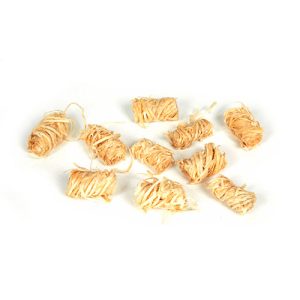Every year, large numbers of fawns are still needlessly killed a gruesome death during haying. The situation is improving, new technologies are being developed and more and more information is getting to the general public about how much work hunters have to save fawns during this period. We cannot forget the improving trend in the communication between farmers and hunters, who are also not indifferent to the fate of the little fawns and, last but not least, the quality of the feed, which is not contaminated by the animal component.
We are also involved in the active protection of fawns from haymaking, as we do every year.
There are many tutorials, discussions and mastered techniques available. However, without communication and timely information on when haying will be done, the chances of safely driving the fawns out are minimal and associated with that are the driving techniques.
Even though farmers communicate, they often have to change their plans from hour to hour as to where they will go to cut because the weather and other factors are unpredictable.
Everyone tries to help as much as they can, so here I will present our best practice that works for us.
That's why I borrowed the Terminus technicus from the food industry, the so-called Barrier Method.
What is it? In the application of several procedures, which individually are not 100%, but their combination can achieve 90% - 100% efficiency without being expensive.
Personally, I think deer control methods can be categorized into two main branches: passive and active.
The passive branch is when we make sure that the doe do not put the fawns in the meadows just before mowing or that they take them away to safety. This branch is always less stressful for the deer and can be done well in advance and well planned. The passive branch methods include the application of scent, sound, and visible deterrents, or personal smelling the evening before mowing the bows. On the other hand, if the fawn is really newly born, it can hardly be expected that the doe will take it away by the next day. New active search technologies are best for this.
The active branch is the driving out of game just before mowing, the removal of found fawns from the grassland. Fawns can be searched for using new search procedures (drones with thermal imaging or optical devices installed directly on the mowers). This branch already requires a very organized approach and puts an emphasis on time demands, as it must take place at the precise times when the tractors cut the meadows and someone must always be present to actively look for fawns.
Apply to the meadow before mowing for a maximum of 5 days. The spacing of the individual rollers is 25 x 30 meters and we spray according to the instructions from the magazine Myslivost, where this technique was described. 1 second on each side of the roller. There are certainly positive opinions of various hunting associations on this procedure as well. You can read the articles on the links of Myslivost magazine.Můžete si články přečíst na odkazech časopisu Myslivost.
This will ensure time flexibility, as most farmers plan to harvest the hay within a week, so there is no need to argue about which meadow to start with. On Saturday evening, the rollers can be applied to the meadow and the whole working week is covered, giving time space for other tasks.
Of course, this procedure also suits farmers who have a lot of other work, and this application simplifies the complexity of reporting and planning. At the very least, we avoid the fact that sometimes in this rush the farmer forgets to remind himself in time.


The advantage of this application is that it uses a completely 100% natural material that decomposes, so farmers or anyone else need not worry about polluting the environment. At the same time, the chemical preparation is declared as a harmless natural product, so it can be safely used thrown in the grass without degrading the feed or creating inappropriate chemical toxins in the feed and thus causing health problems for farm animals.
However, even this very effective and cheap product is not 100% effective and in certain cases, fawns are killed and/or some pieces of fawn become habituated, which is resistant to this odor repellant. Adult bucks and fawns were observed moving in the stands the day after Hagopur was applied.
Despite this, this does not change the fact that 80-90% of fawns that would otherwise remain in the stands are saved in this way.
If farmers give notice at least one or two days in advance that they are going to cut a particular stand, it is a good idea to add chemical scarers and sound ones. They beep very annoyingly or talk and make different noises. Their effectiveness is relatively high, but only for a short time before the roe deer gets used to them. We have noticed that these deterrents work for a maximum of one to two days and then the roe deer gets used to it very quickly.
However, these sound scarers have several disadvantages that are worth mentioning. Their purchase price is relatively high, but they can be used repeatedly for several years. You also need to think about batteries for the power source.
We come to probably the biggest problem. We have to place the fire extinguisher in suitable locations. Preferably for those where they will not interfere with the farmers' work, but at the same time will fulfill their purpose of covering the entire stand. In the case of classic meadows, which tend to be at the borders of fields and forests and are supplemented with bogs with ties, it is relatively simple to place these scarecrows right there. But the problem comes when it's a field of clover or alfalfa in the middle of nowhere.
Another disadvantage is that after completing the task, it must be collected. And watch out - they steal! We don't know what people might be using it for, but they are being stolen.
If a farmer reports in the evening that he is going to mow the meadow in the morning, the advantage is the very quick application of these scarecrows by one person. A few pieces are enough for several hectares, which one person can easily handle in no time. There is no need to apply anything.
Although the previous two methods really work, some meadows are like a magnet for doe and will not help at all. For this reason, we pass some sections of meadows even in the evening before mowing. The result really works. In conjunction with the application of sonic and chemical repellants, this is a very important combination.
Here, however, we encounter again the time pressure before mowing. Since mowing cannot be well planned many times, it is difficult to gather a large number of people quickly. Yes, there are applications (STOP mowing the deer or Save the deer from the mower) that use volunteers from the public, which helps a lot, but with today's performance of mowers, when farmers are able to mow several tens of hectares in one to two days, it is very difficult to go through everything in one evening.
Even this method is not 100%, because in some localities there is permanent disturbance of the game by people with dogs and the roe deer simply get used to this movement, therefore even after this alone roe deer were seen in the meadows in the morning.
On the other hand, it is necessary to mention these developed applications that bring together a number of volunteers, hunters and farmers. Thanks to this movement, it became clear that the majority of the public is not indifferent to the fate of wild animals, and the issue became widely popularized, which led, among other things, to the development of new and modern technologies.
We treat the meadows with this combination of scaring methods. Of course, there are a number of other and effective measures that can be applied. Often it is about staffing, procurement costs and other aspects that often differ from local conditions.
A drone with a thermal camera is a very effective tool in the fight to save lives. But even this device is not completely ideal. High purchase price, trained operators who must have tests and, above all, drones can be safely used early in the morning, until the meadows are warmed up and the temperature differences are equalized. In such stands, it is particularly problematic to effectively search for fawns. Above all, farmers mow on normal working days in the morning and when it is warm. This means that the drone must be operated by someone who can afford to be home from work. This is very limiting for a lot of people.
This does not change the fact that drones are the music of the future and over time these devices will also become popular and will certainly bring a lot of saved lives. A very high-quality article can be found on the CMMJ OMS Havlíčkův Brod "Drone helps haymakers to search for game around Chotěboř".
The latest trend in the field of new technologies is the application of an optical sensor directly to the mowers, which is still under development, but the practical part showed that the developers went in the right direction. You can read an article about this method in the Hunting magazine. Indeed, this innovation works. The advantage is that these sensors are not limited by temperature differences, as is the case with thermal imaging, but can be used throughout the day.
Good luck to the hunt and life to the fawns!
Your team Huntastic
© 2024 Huntastic s.r.o., all rights reserved.
This website uses cookies to improve your browsing experience. Of these, cookies are stored in your browser and are categorised as necessary for the basic functions of the site to work. We also use third party cookies to help us analyse and understand how you use this website. These cookies will only be stored in your browser with your consent. You also have the option to opt out of these cookies. But opting out of some of these cookies may affect your browsing experience.
